Abstract
1. The aim of this study was to investigate the relationship between the blood flow through and the secretion by the salt glands of conscious, salt-water-adapted Pekin ducks. 2. Intravenous loading with hypertonic saline induced a steady-state secretion from the salt glands with a concomitant increase in whole-organ blood flow. The distribution of elevated local glandular blood flow was, however, uneven and in addition demonstrated vasomotor patterns that ranged from constant to rhythmic. 3. During on-going salt gland secretion, the infusion of three vasoactive agents, 5Val-angiotensin II (ANG II), 8Arg-vasotocin (AVT) and noradrenaline, via the carotid artery had differential effects on salt gland blood flow and secretion. 4. ANG II (80 pmol min-1 (kg body wt)-1) had no effect on mean arterial blood pressure (MABP), produced a transient 30% decrease in glandular blood flow and strongly diminished salt gland secretion (retention of 6.4 mosmol NaCl). 5. AVT (20 pmol min-1 (kg body wt)-1) had no effect on MABP and did not alter salt gland secretion despite a 35% reduction in blood flow. 6. Noradrenaline (20 nmol min-1 (kg body wt)-1) elevated MABP by 15 mmHg, reduced salt gland blood flow by more than 50%, but diminished salt gland secretion only slightly (retention of 2.7 mosmol NaCl). 7. Using ANG II, AVT and noradrenaline as hormonal tools, integrated changes in blood flow rate did not correspond with integrated changes in salt gland excretion. The partial dissociation between both parameters shows that control of secretion by the salt gland is more complex than simply being linearly dependent upon blood flow through it.
Full text
PDF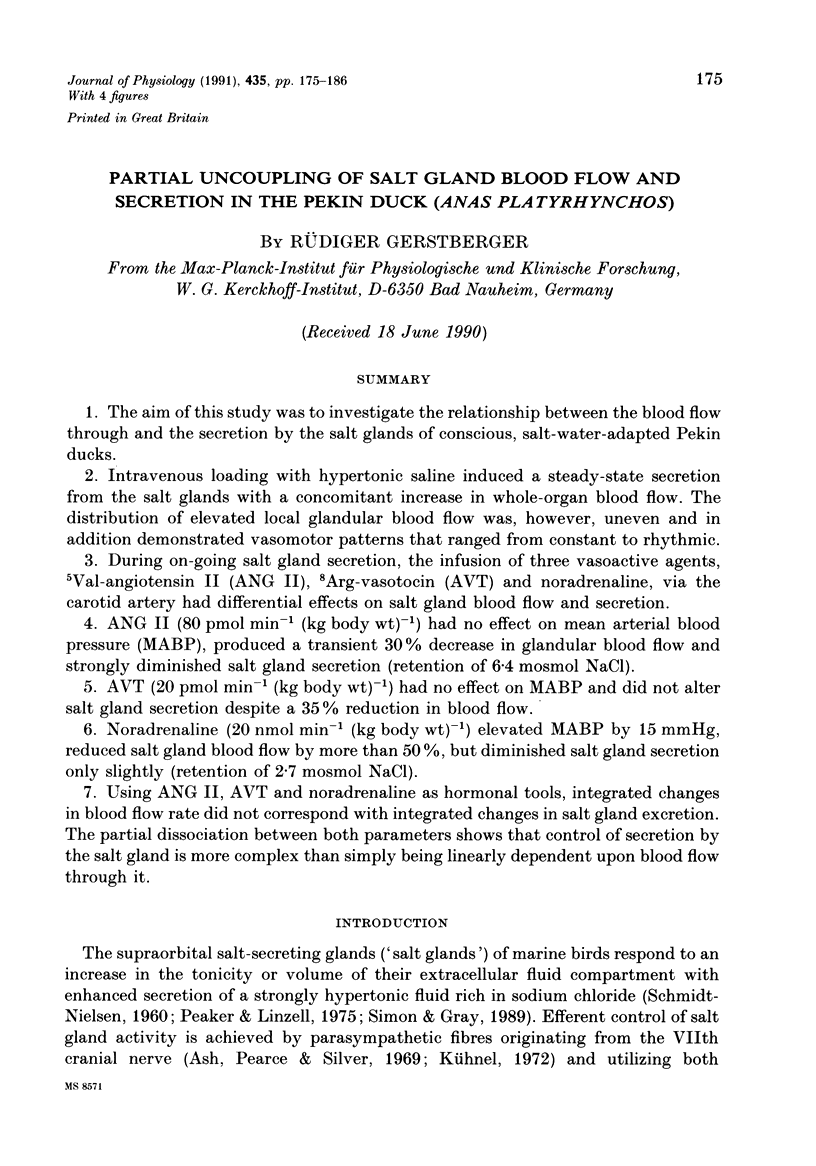
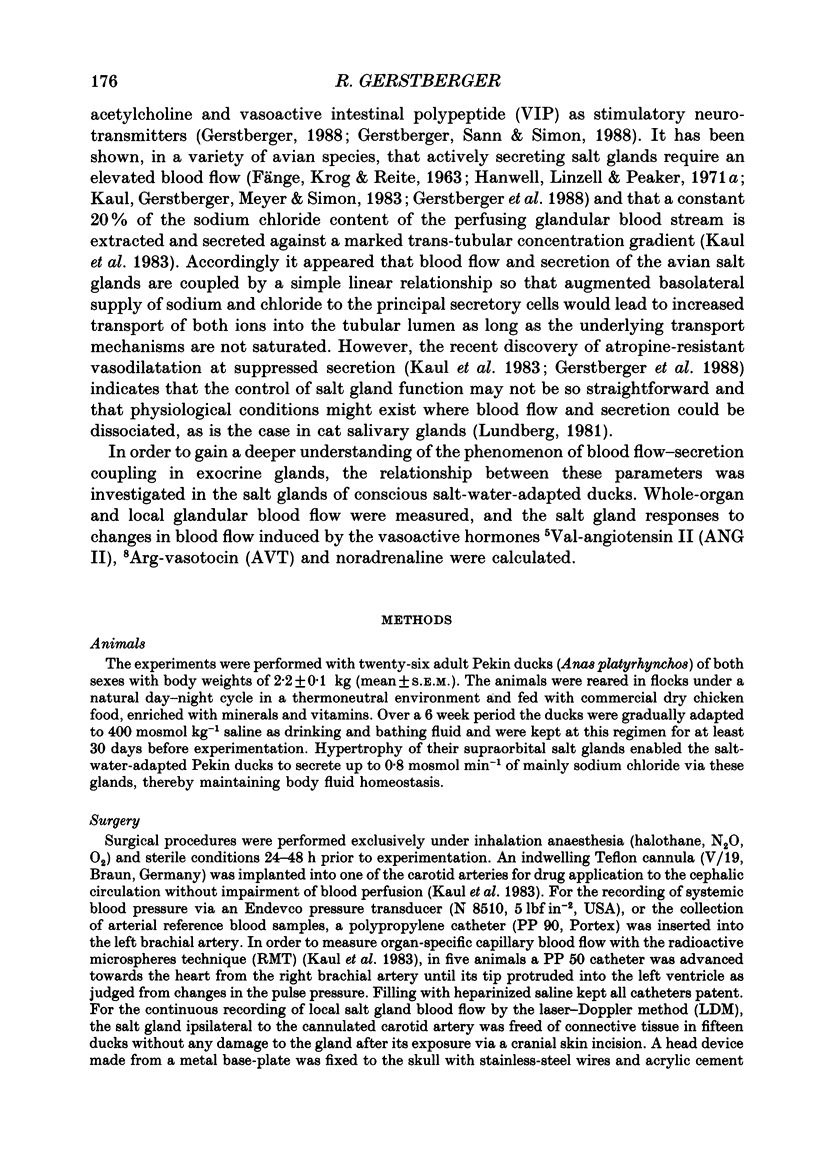
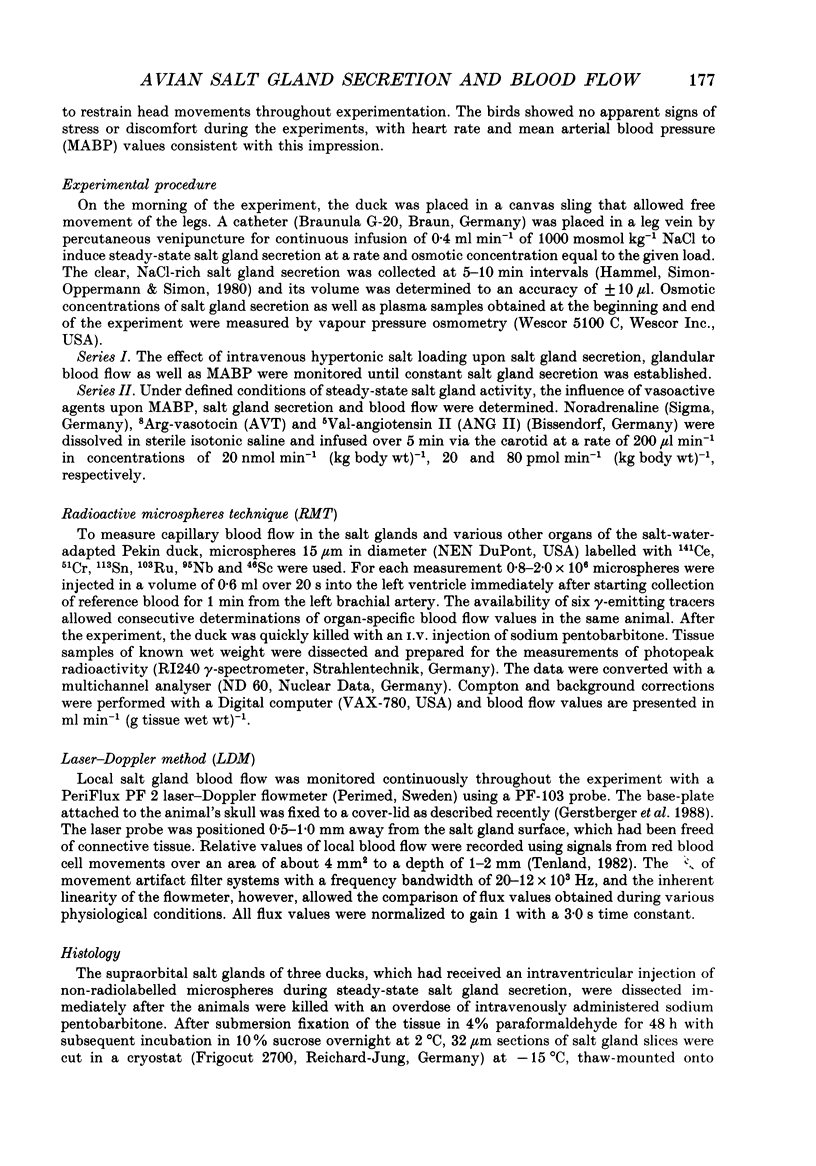
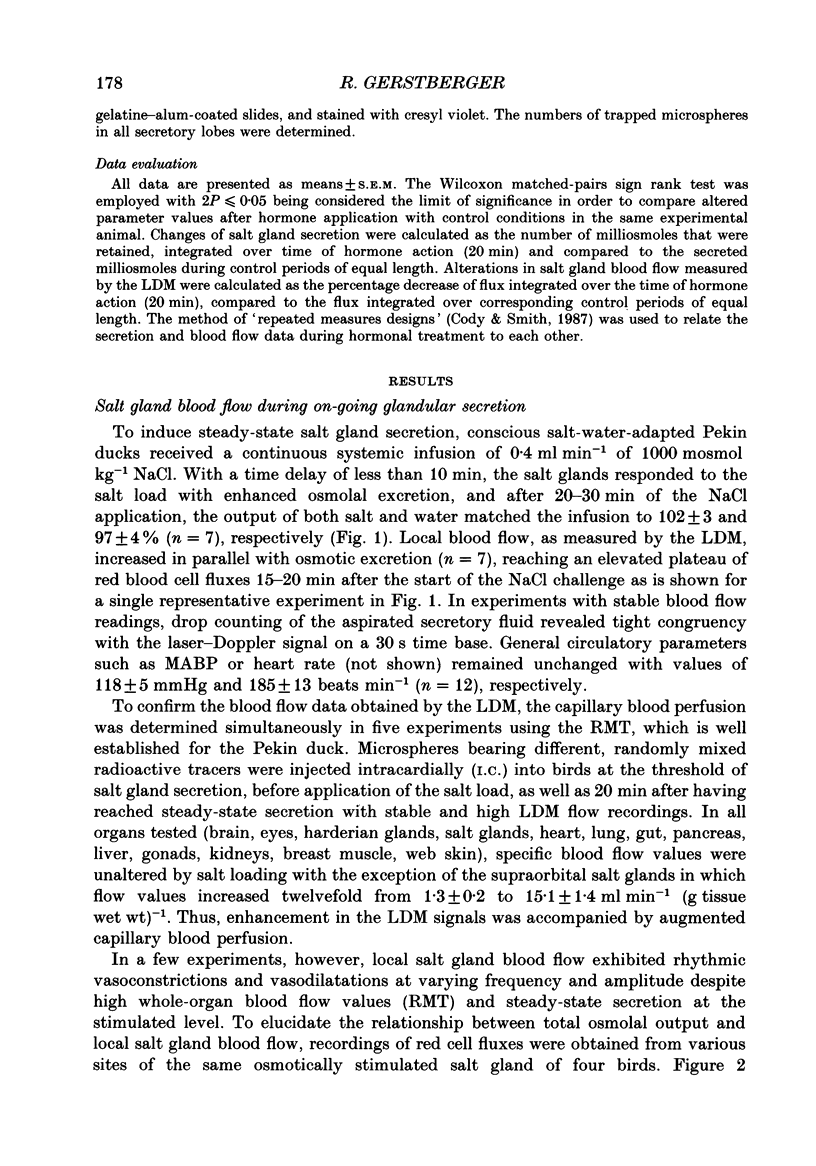
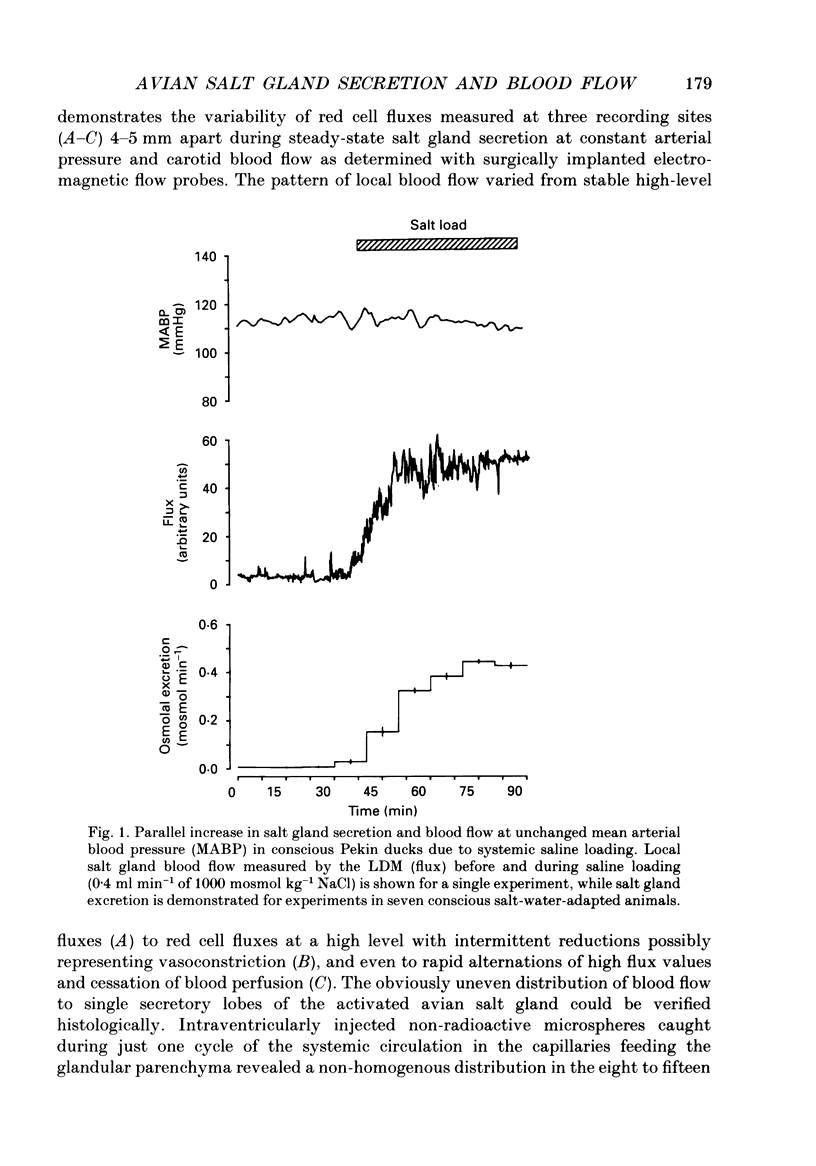
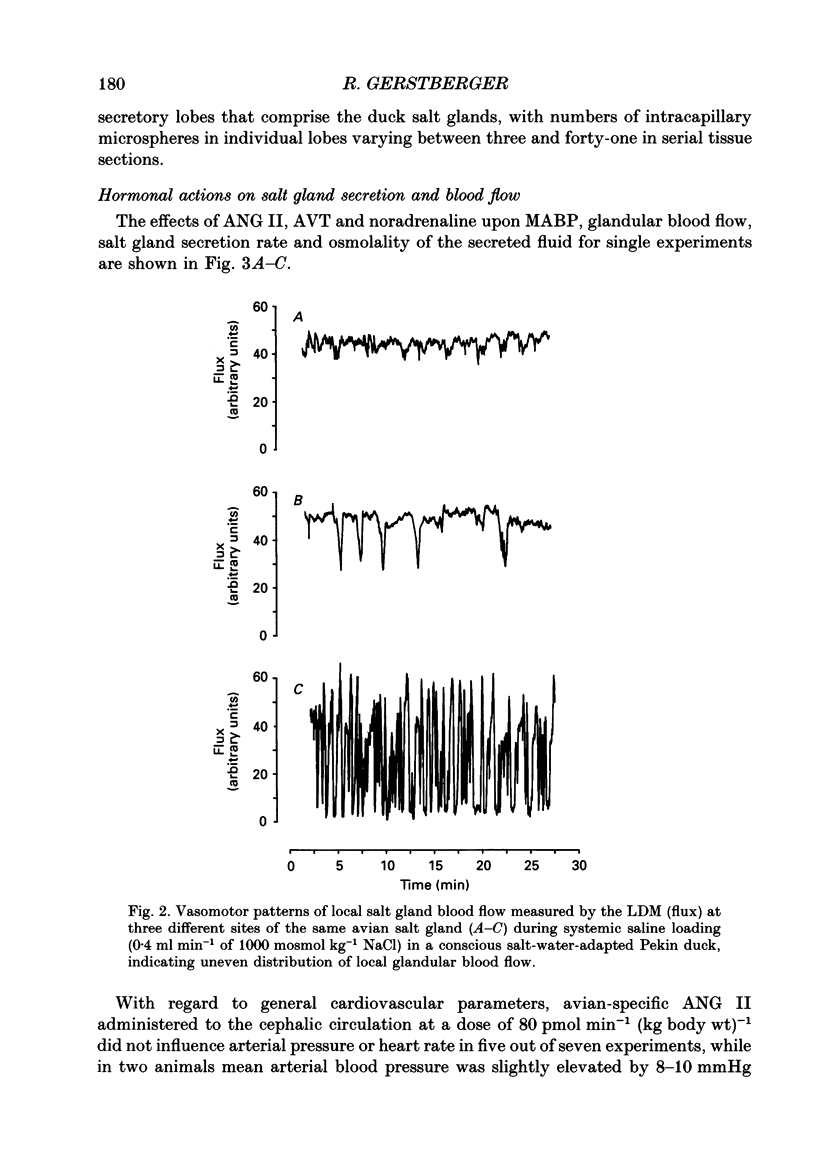
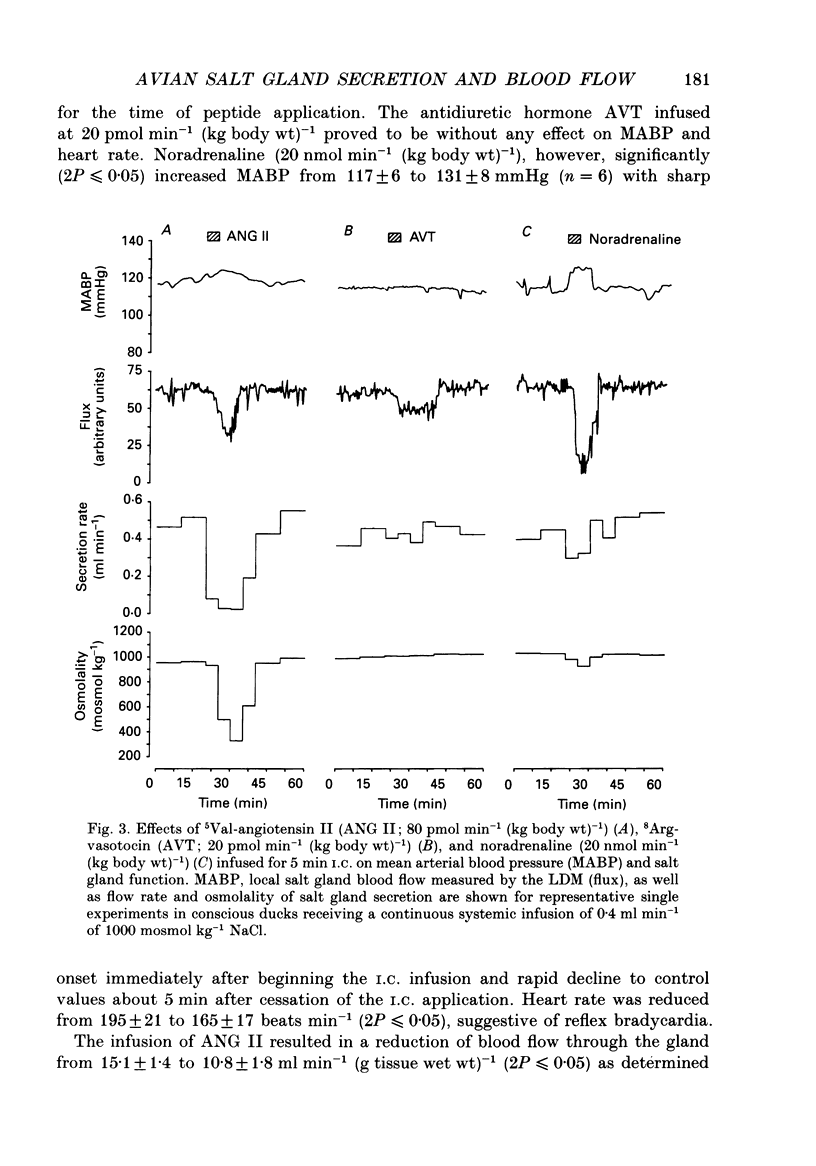
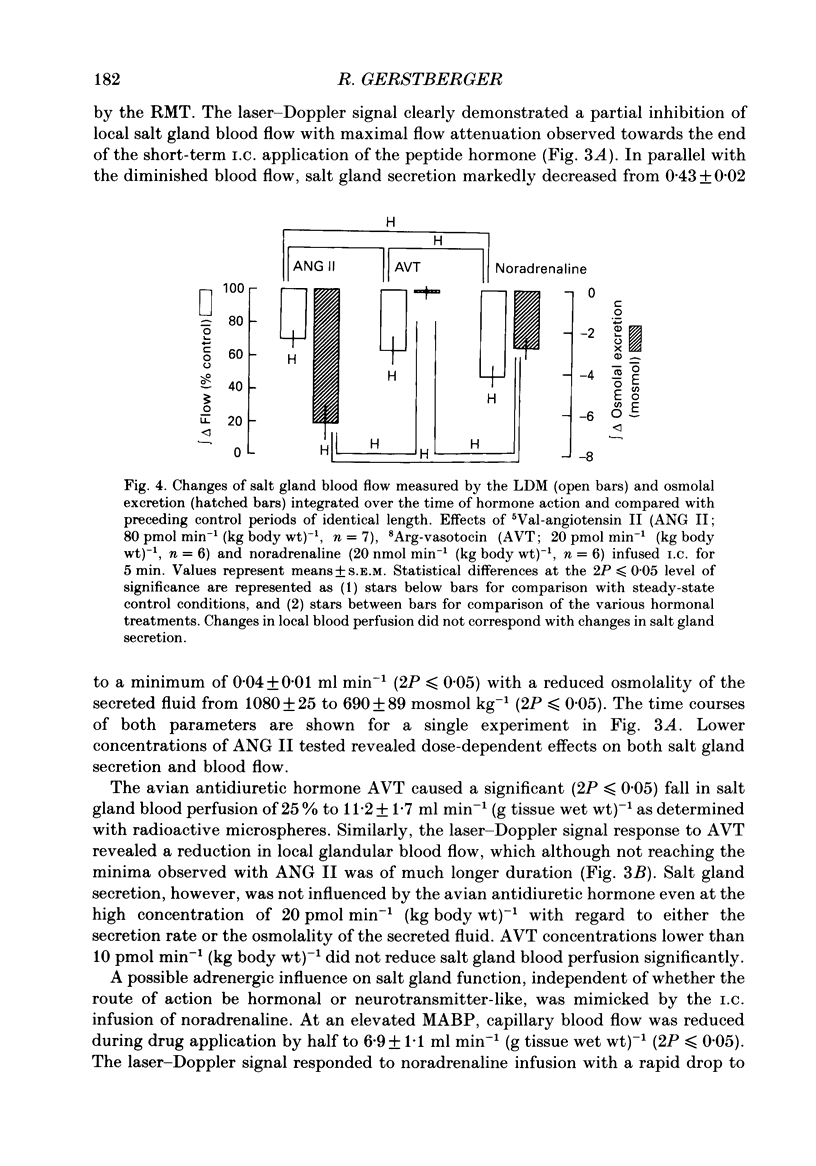
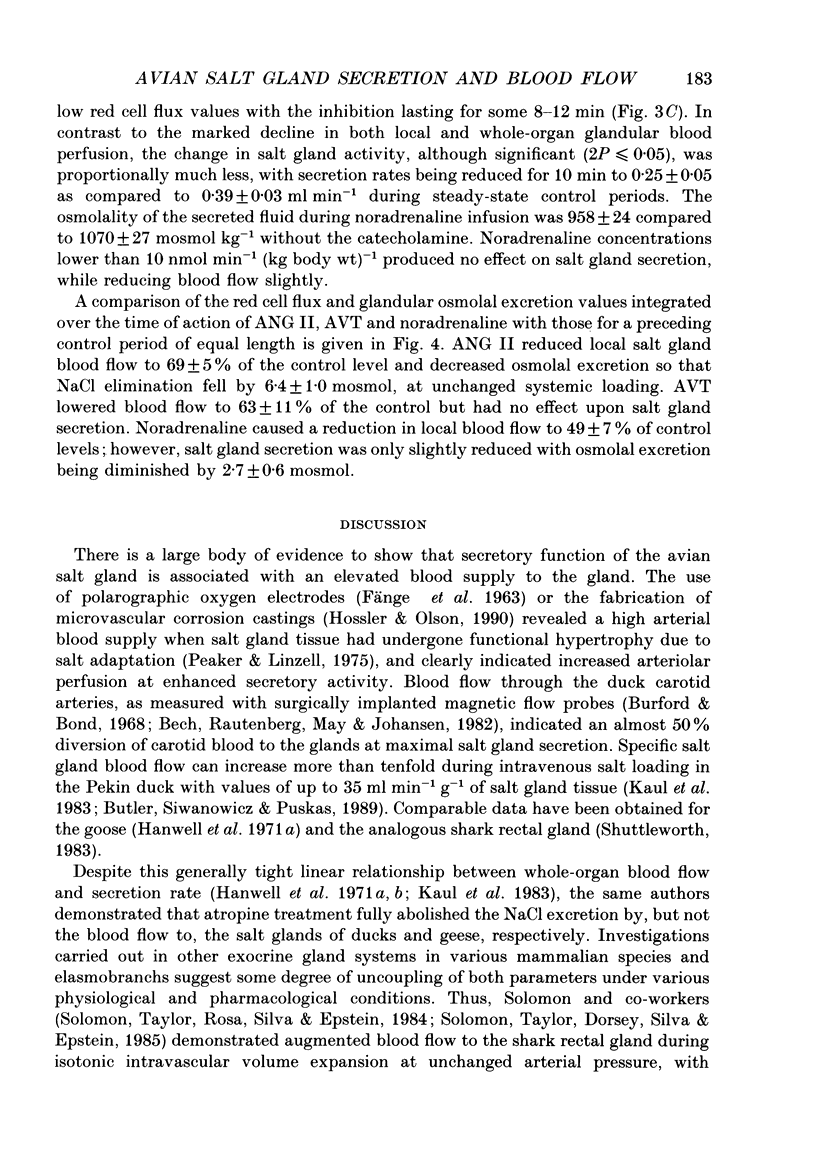
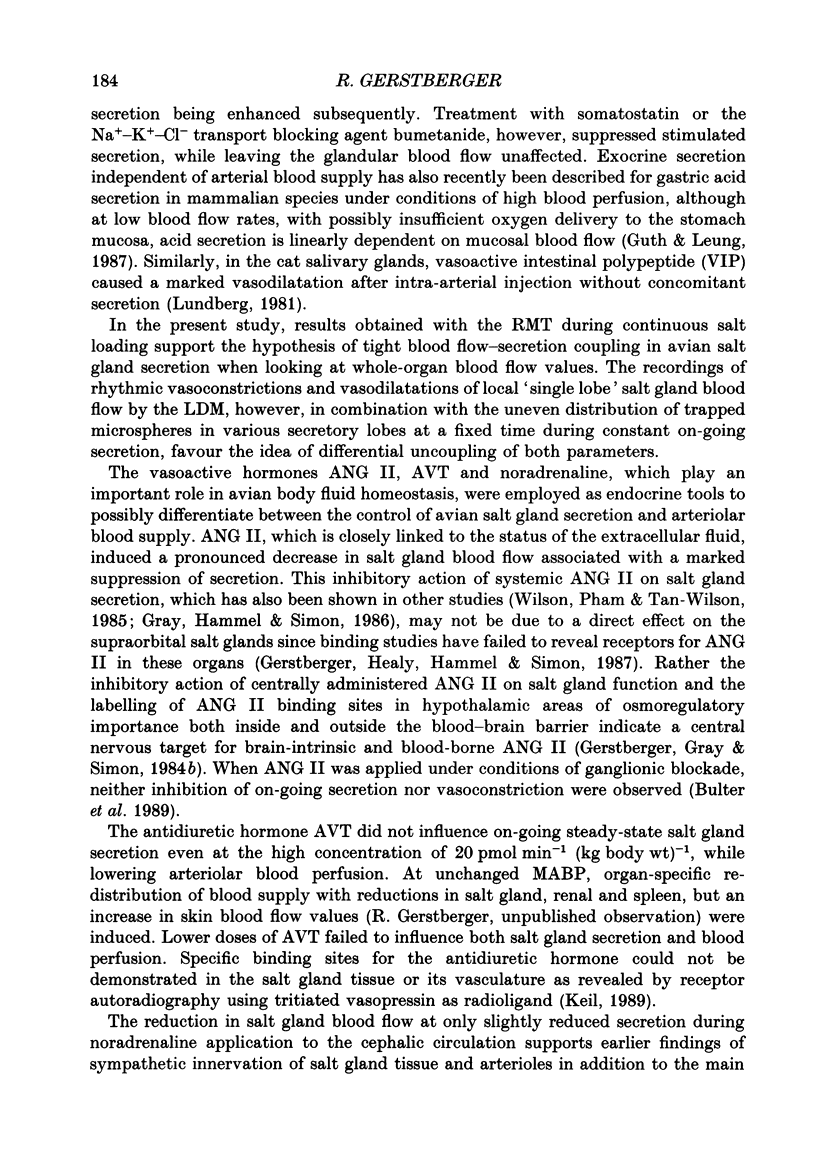


Selected References
These references are in PubMed. This may not be the complete list of references from this article.
- Ash R. W., Pearce J. W., Silver A. An investigation of the nerve supply to thealt gland of the duck. Q J Exp Physiol Cogn Med Sci. 1969 Jul;54(3):281–295. doi: 10.1113/expphysiol.1969.sp002027. [DOI] [PubMed] [Google Scholar]
- Burford H. J., Bond R. F. Avian cardiovascular parameters: effect of intravenous osmotic agents, relation to salt gland secretion. Experientia. 1968 Oct 15;24(10):1086–1088. doi: 10.1007/BF02138765. [DOI] [PubMed] [Google Scholar]
- Gerstberger R. Functional vasoactive intestinal polypeptide (VIP)-system in salt glands of the Pekin duck. Cell Tissue Res. 1988 Apr;252(1):39–48. doi: 10.1007/BF00213824. [DOI] [PubMed] [Google Scholar]
- Gerstberger R., Gray D. A., Simon E. Circulatory and osmoregulatory effects of angiotensin II perfusion of the third ventricle in a bird with salt glands. J Physiol. 1984 Apr;349:167–182. doi: 10.1113/jphysiol.1984.sp015150. [DOI] [PMC free article] [PubMed] [Google Scholar]
- Gerstberger R., Healy D. P., Hammel H. T., Simon E. Autoradiographic localization and characterization of circumventricular angiotensin II receptors in duck brain. Brain Res. 1987 Jan 1;400(1):165–170. doi: 10.1016/0006-8993(87)90666-4. [DOI] [PubMed] [Google Scholar]
- Gerstberger R., Sann H., Simon E. Vasoactive intestinal peptide stimulates blood flow and secretion of avian salt glands. Am J Physiol. 1988 Oct;255(4 Pt 2):R575–R582. doi: 10.1152/ajpregu.1988.255.4.R575. [DOI] [PubMed] [Google Scholar]
- Hammel H. T., Simon-Oppermann C., Simon E. Properties of body fluids influencing salt gland secretion in Pekin ducks. Am J Physiol. 1980 Nov;239(5):R489–R496. doi: 10.1152/ajpregu.1980.239.5.R489. [DOI] [PubMed] [Google Scholar]
- Hanwell A., Linzell J. L., Peaker M. Cardiovascular responses to salt-loading in conscious domestic geese. J Physiol. 1971 Mar;213(2):389–398. doi: 10.1113/jphysiol.1971.sp009388. [DOI] [PMC free article] [PubMed] [Google Scholar]
- Hanwell A., Linzell J. L., Peaker M. Salt-gland secretion and blood flow in the goose. J Physiol. 1971 Mar;213(2):373–387. doi: 10.1113/jphysiol.1971.sp009387. [DOI] [PMC free article] [PubMed] [Google Scholar]
- Hossler F. E., Olson K. R. Microvasculature of the nasal salt gland of the duckling, Anas platyrhynchos: quantitative responses to osmotic adaptation and deadaptation studied with vascular corrosion casting. J Exp Zool. 1990 Jun;254(3):237–247. doi: 10.1002/jez.1402540302. [DOI] [PubMed] [Google Scholar]
- Kühnel W. On the innervation of the salt gland. Z Zellforsch Mikrosk Anat. 1972;134(3):435–438. doi: 10.1007/BF00307177. [DOI] [PubMed] [Google Scholar]
- Lowy R. J., Ernst S. A. Beta-adrenergic stimulation of ion transport in primary cultures of avian salt glands. Am J Physiol. 1987 Jun;252(6 Pt 1):C670–C676. doi: 10.1152/ajpcell.1987.252.6.C670. [DOI] [PubMed] [Google Scholar]
- Lundberg J. M. Evidence for coexistence of vasoactive intestinal polypeptide (VIP) and acetylcholine in neurons of cat exocrine glands. Morphological, biochemical and functional studies. Acta Physiol Scand Suppl. 1981;496:1–57. [PubMed] [Google Scholar]
- SCHMIDT-NIELSEN K. The salt-secreting gland of marine birds. Circulation. 1960 May;21:955–967. doi: 10.1161/01.cir.21.5.955. [DOI] [PubMed] [Google Scholar]
- Shuttleworth T. J. Haemodynamic effects of secretory agents on the isolated elasmobranch rectal gland. J Exp Biol. 1983 Mar;103:193–204. doi: 10.1242/jeb.103.1.193. [DOI] [PubMed] [Google Scholar]
- Solomon R., Taylor M., Dorsey D., Silva P., Epstein F. H. Atriopeptin stimulation of rectal gland function in Squalus acanthias. Am J Physiol. 1985 Sep;249(3 Pt 2):R348–R354. doi: 10.1152/ajpregu.1985.249.3.R348. [DOI] [PubMed] [Google Scholar]
- Wilson J. X., Pham D. V., Tan-Wilson H. I. Angiotensin and converting enzyme regulate extrarenal salt excretion in ducks. Endocrinology. 1985 Jul;117(1):135–140. doi: 10.1210/endo-117-1-135. [DOI] [PubMed] [Google Scholar]


